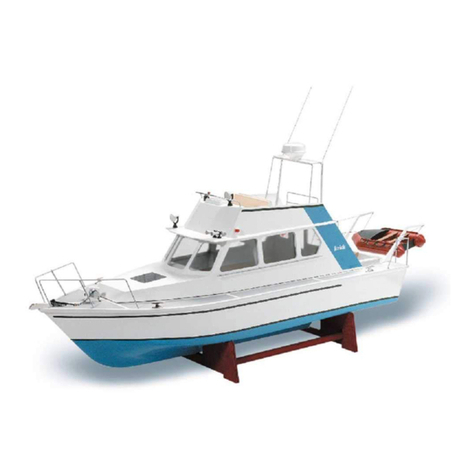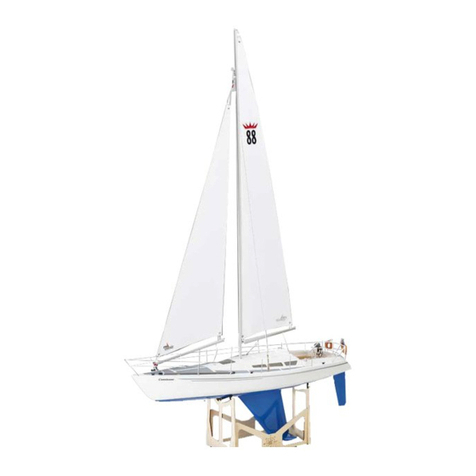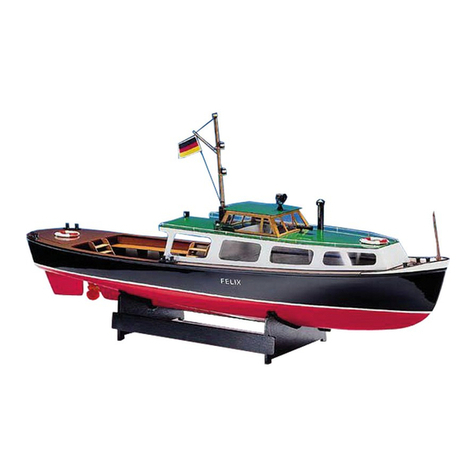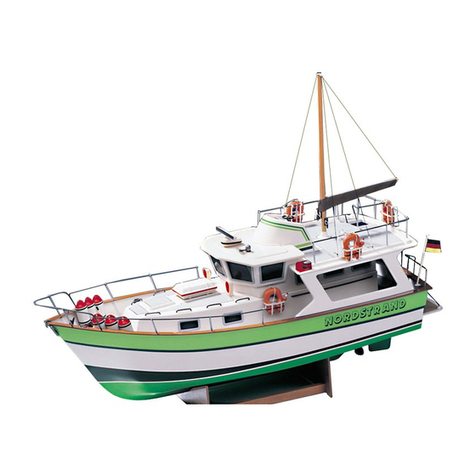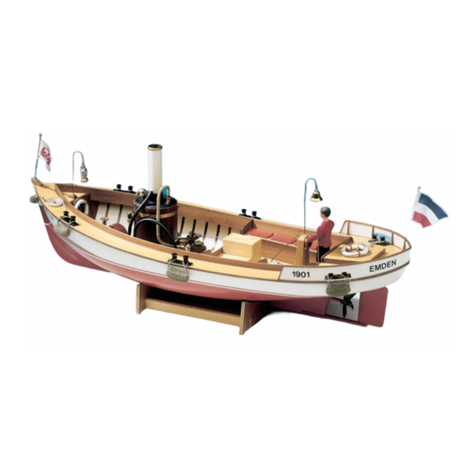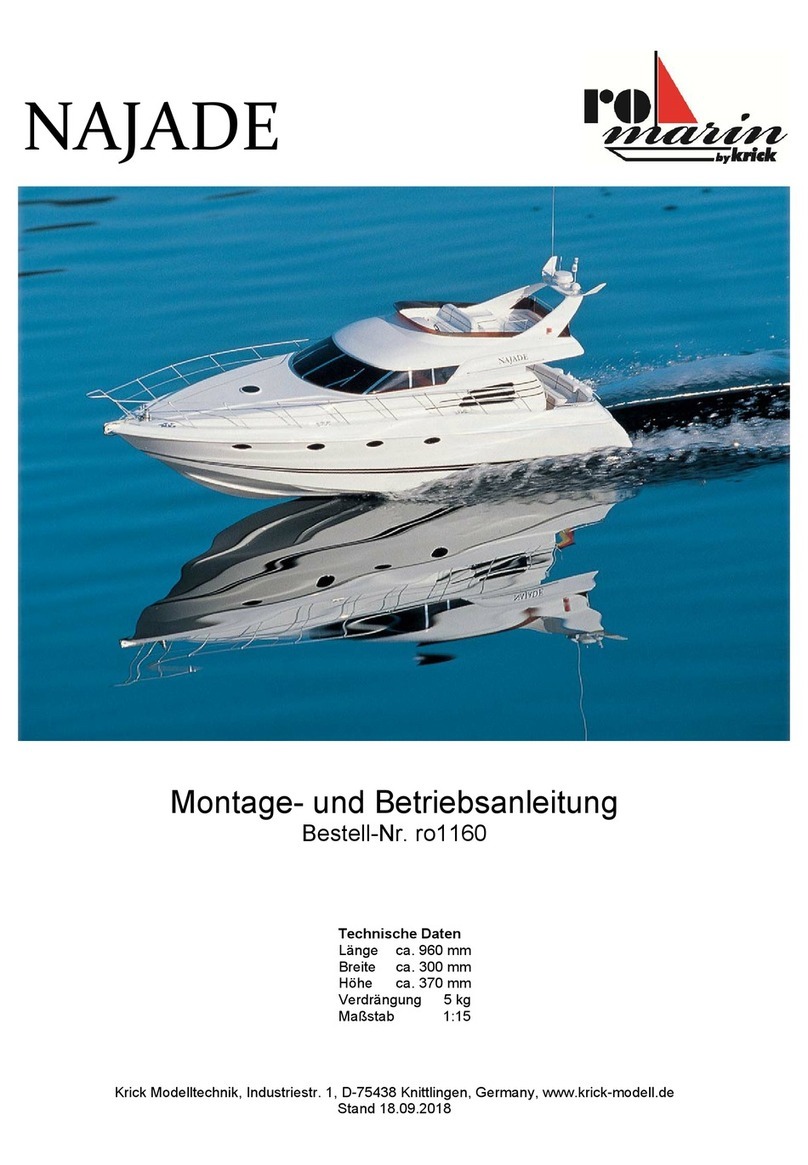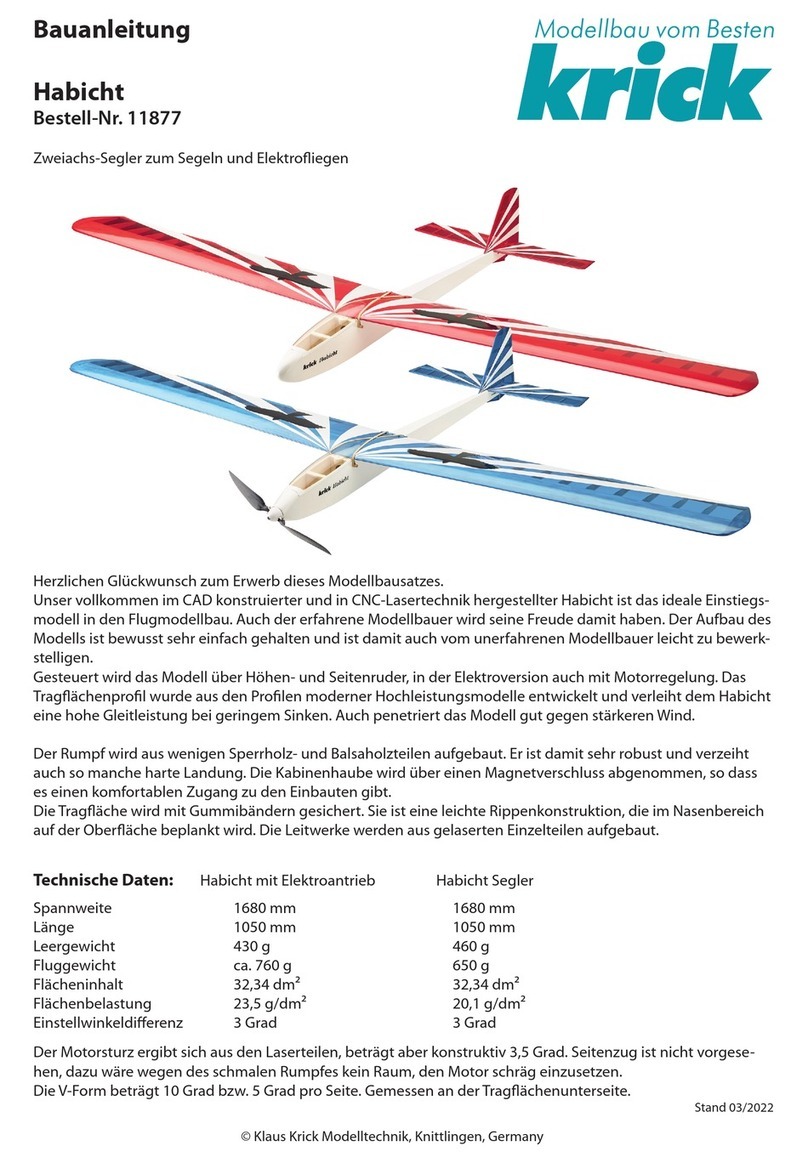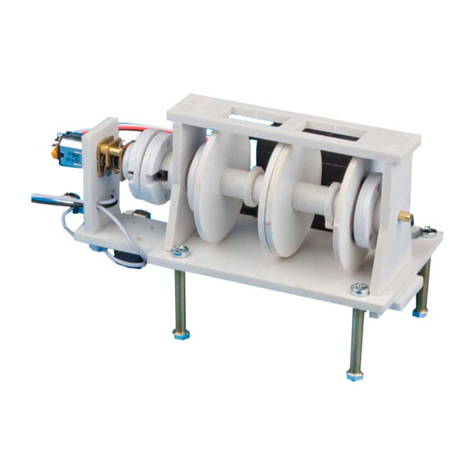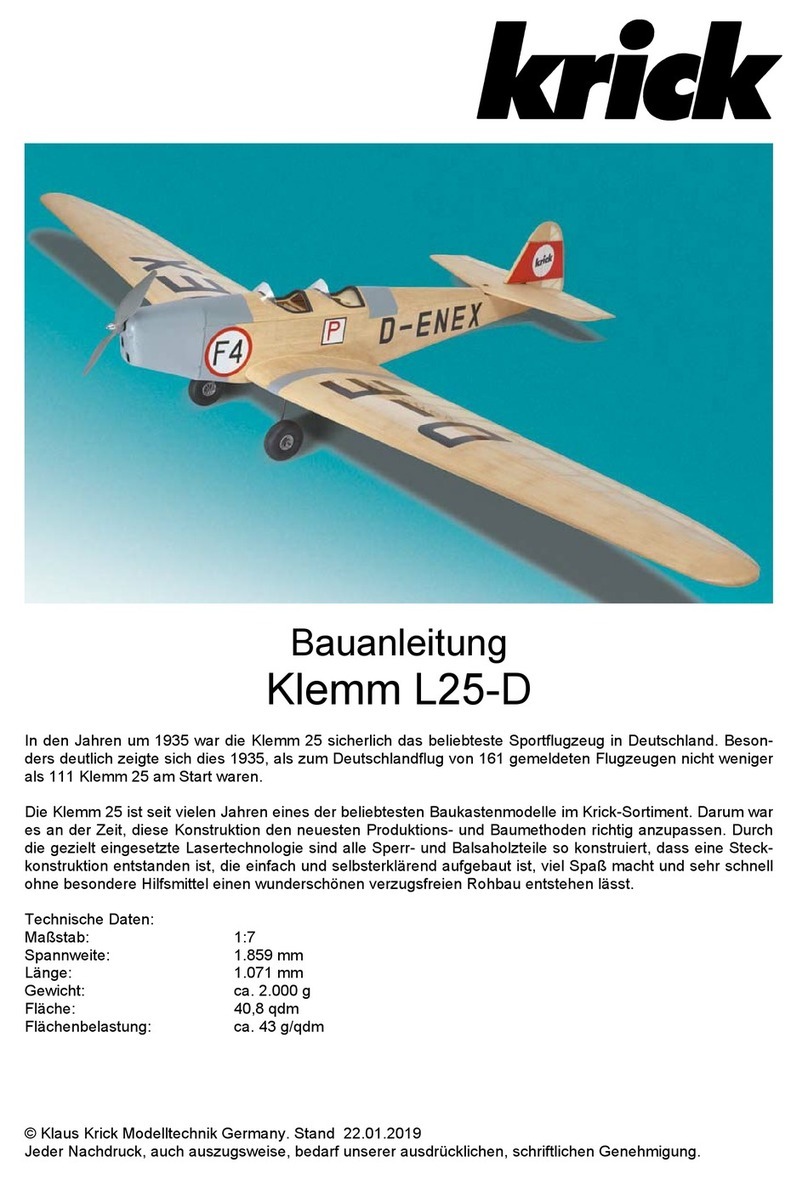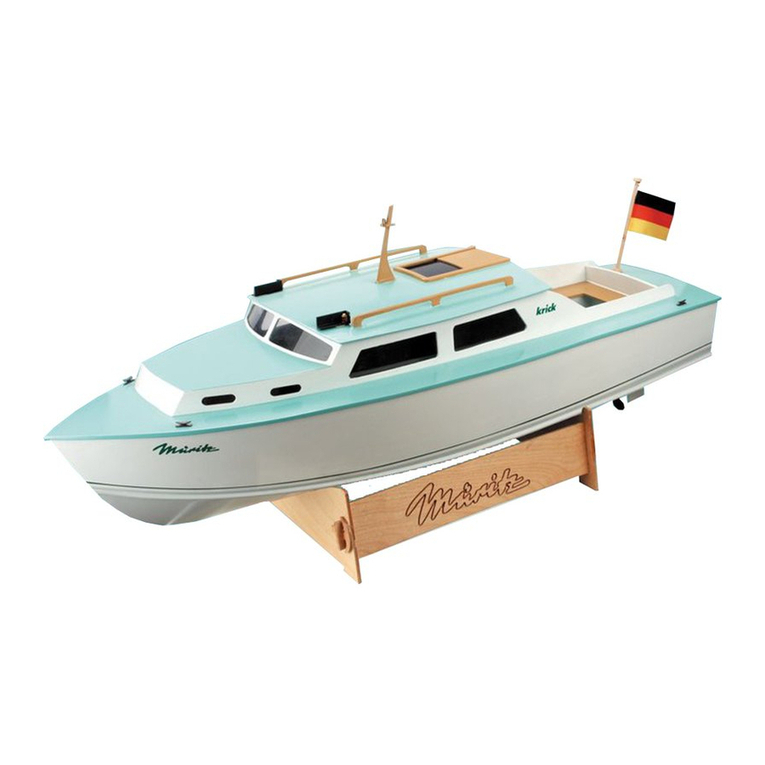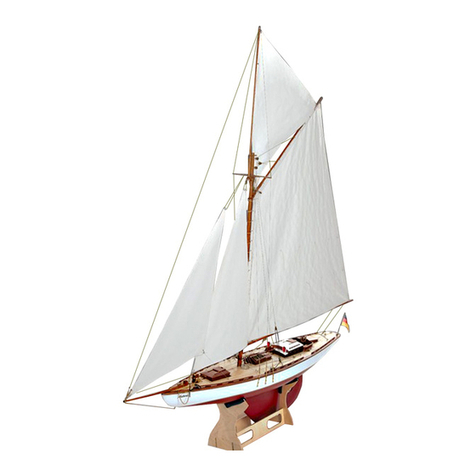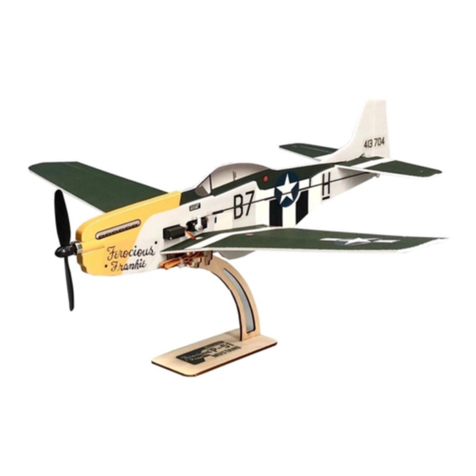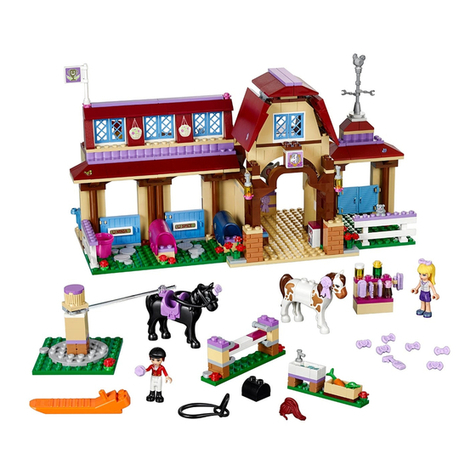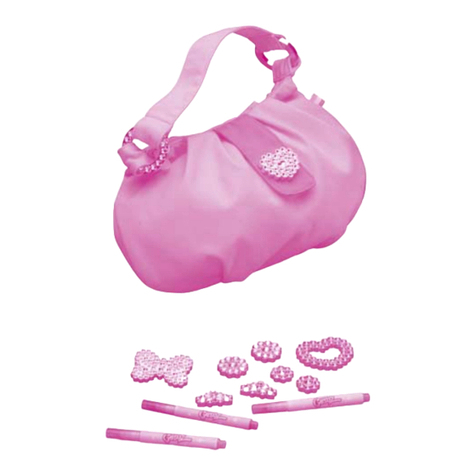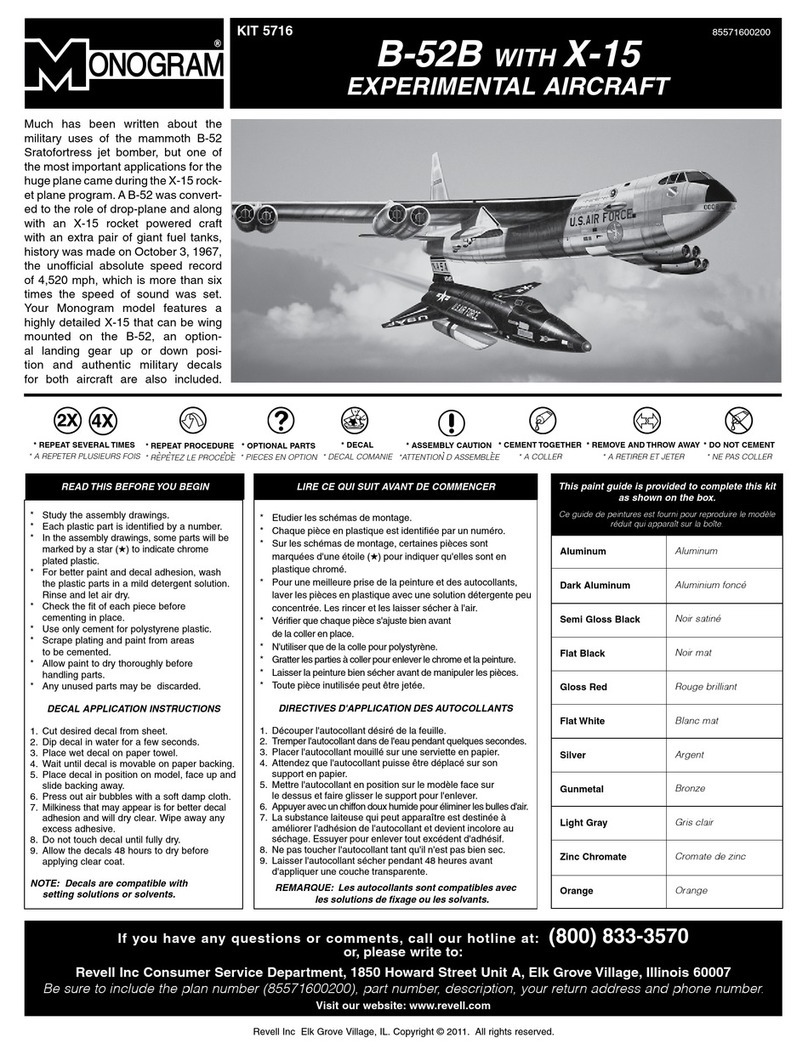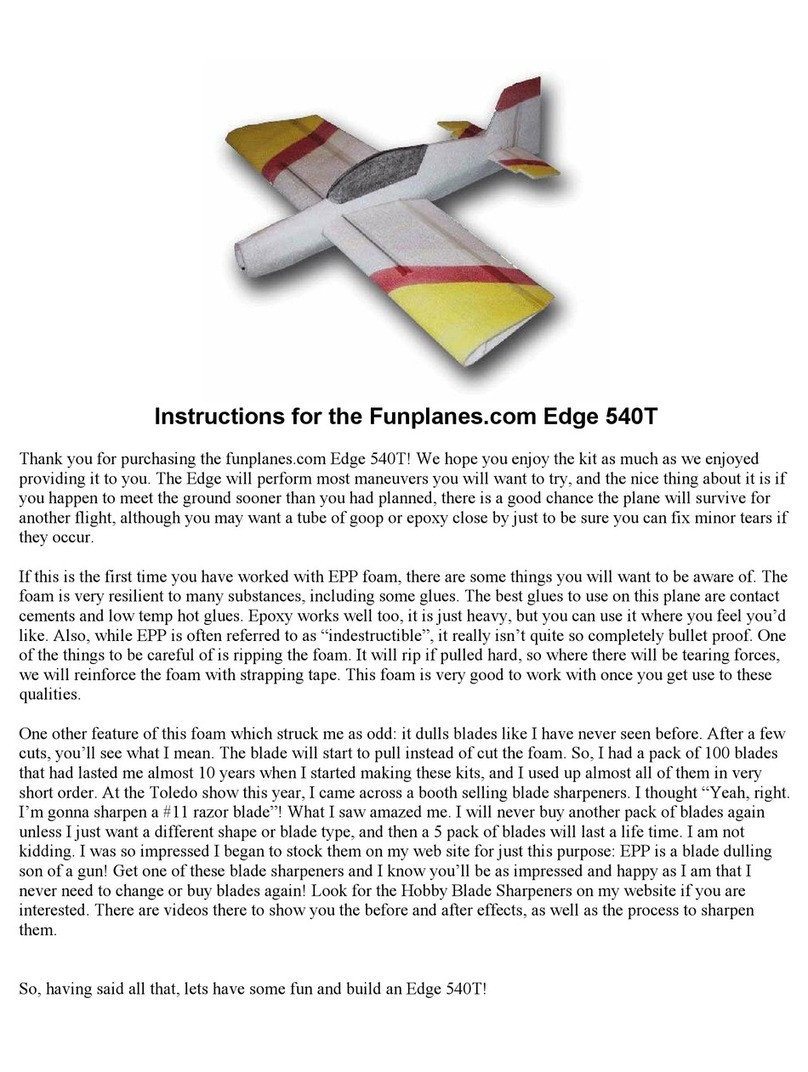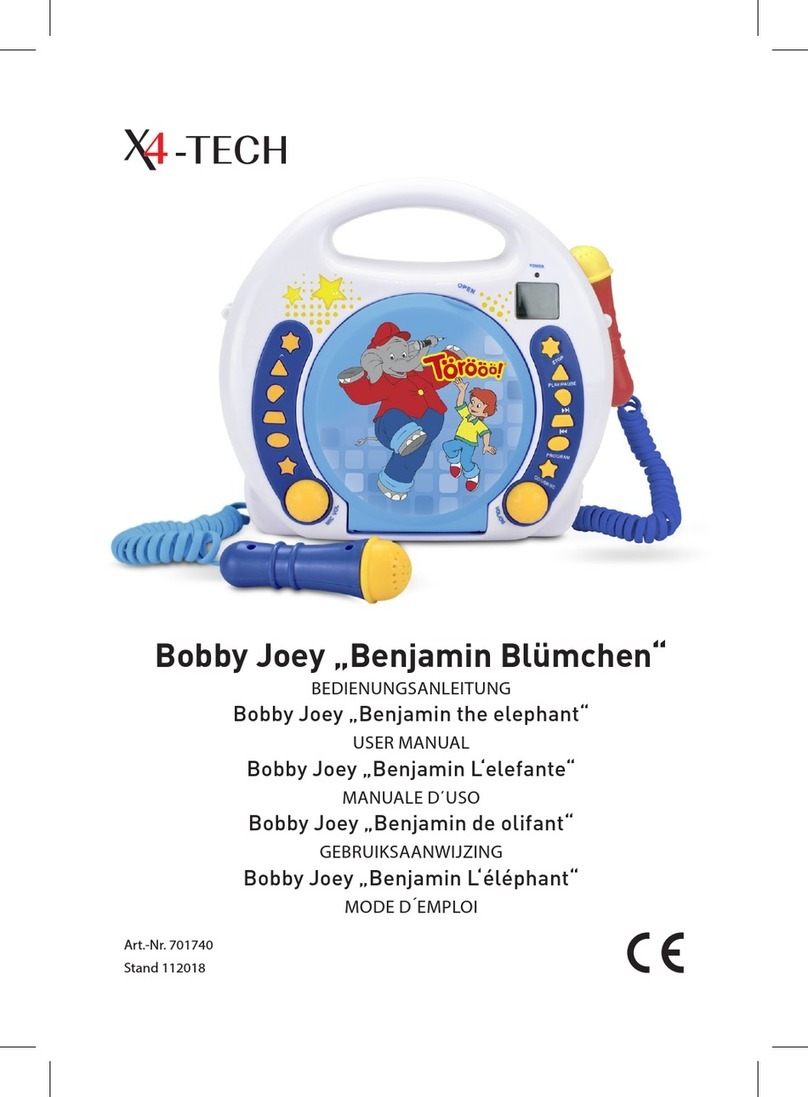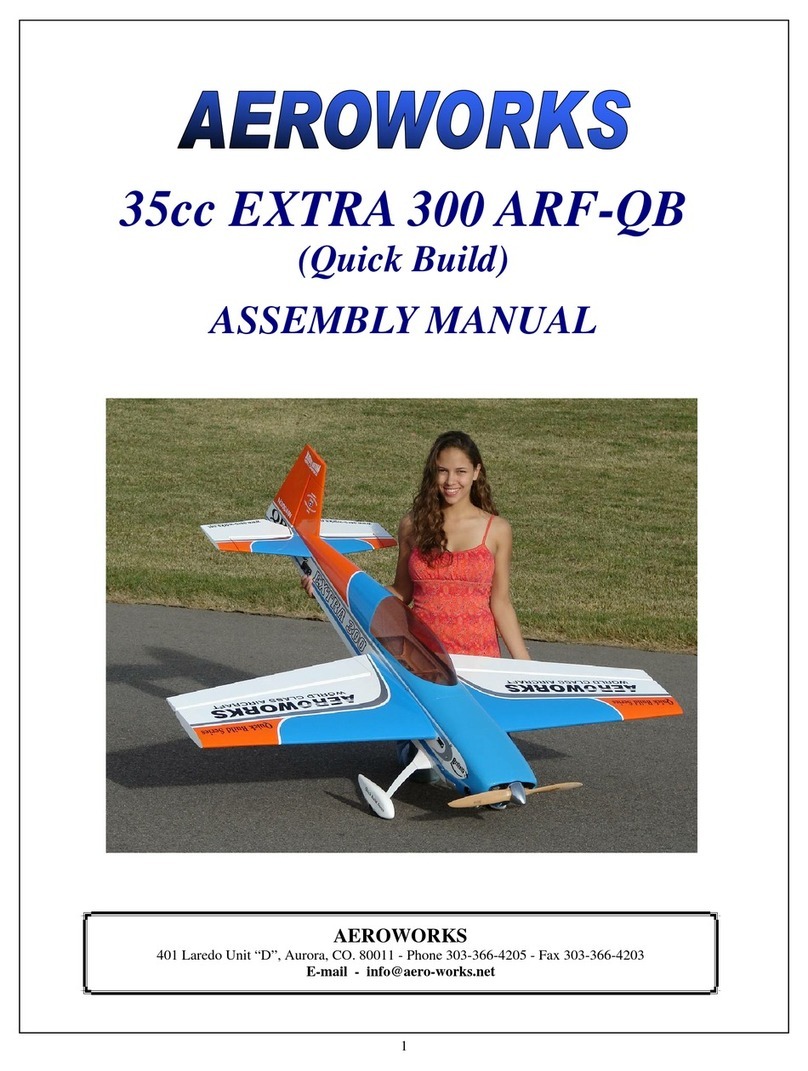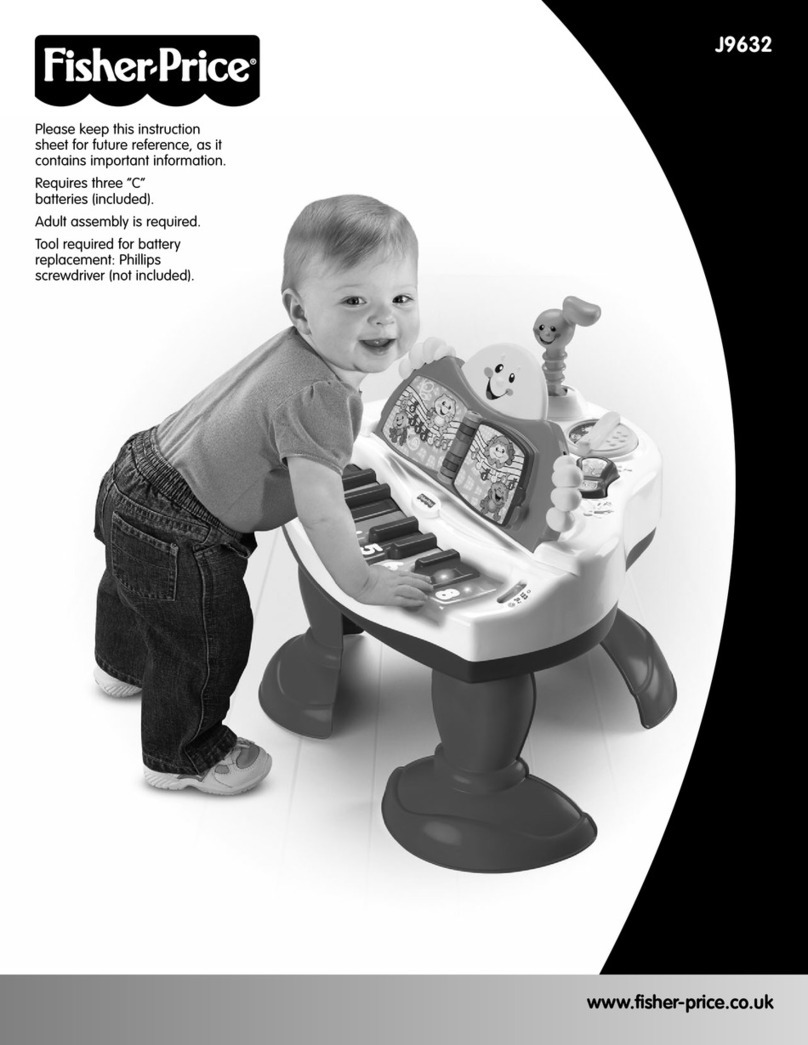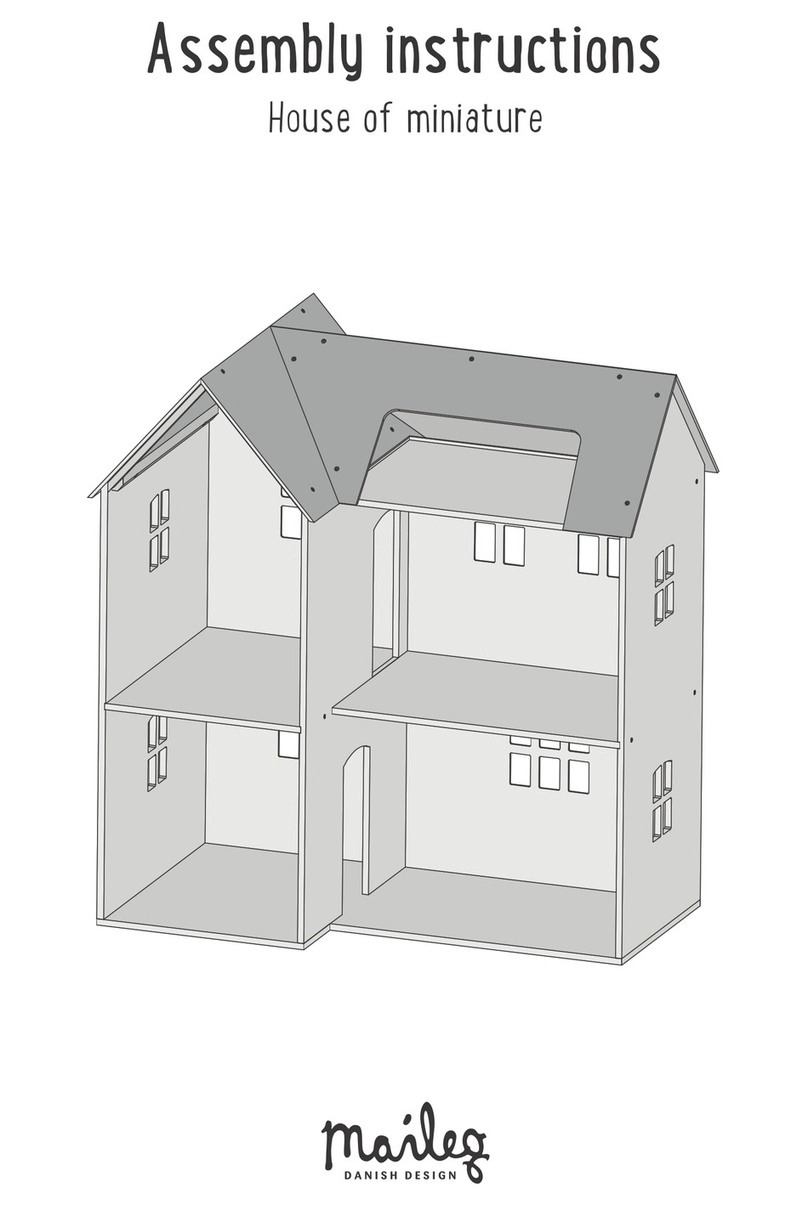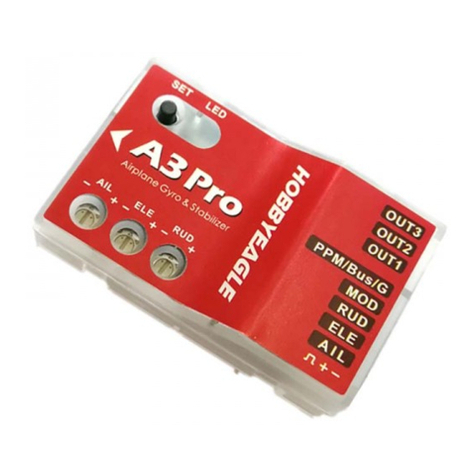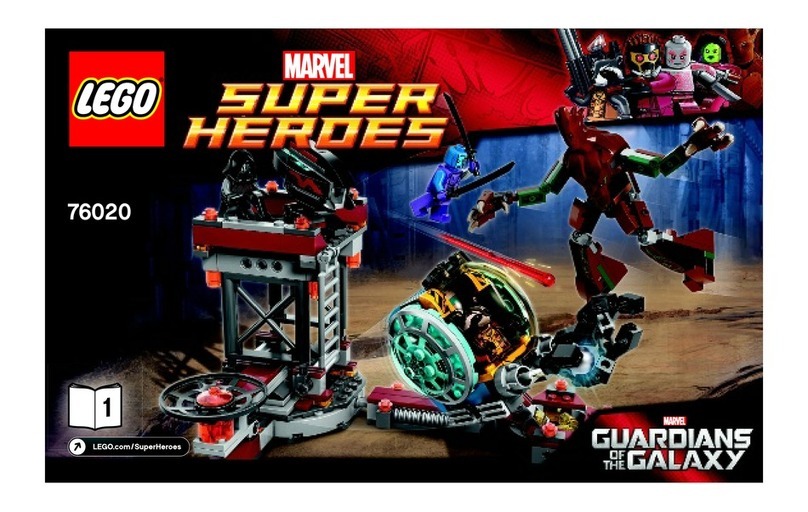
Page 14 © Klaus Krick Modelltechnik Knittlingen August 2002
After a piece of tubing (39) and a set collar (38) have been pushed on, the wire (37) can be pushed
into the inner tube of the Bowden cable. Please consult the build plan for this step. The adjustment is
carried out later.
To fasten both the side rudders (34), the three rudder levers (35) have to be shortened according to
the plan and be drilled with a 1mm hole. Both the rudder levers pointing aft should be chamfered on
their outside so that the rudder throw is not too restricted by the outer side. Now suspend the link 36 in
both rudder levers and mount these in the hull on the rudder shafts. Only then should you suspend the
wire (37) in the third rudder lever and mount this on a rudder shaft. As with the fore fin, connect the
wire with the inner Bowden cable tube with a piece of tubing (39) and set collar (38).
Inserting Servos
The positions of the servos are marked exactly in the build plan. The front servo for the side rudder is
held in place with two battens (20). First fit the battens into the pressure tank. Prepare the two hoses
from the connecting pieces (13) to the pump (P) and find the best position for the servo so that the
hoses do not kink. Screw the battens together with the servo and then set the whole unit into place
and glue the sides with ABS adhesive.
The aft servo for the fore fins is fixed with the double strength braces (42). Fit and glue these initially
within the pressure tank and then fasten the servo with double sided adhesive tape to the floor and to
the brace.
Control of the Rudders
Set both servos to the middle position using the remote control and then attach the rudder levers
vertically to the Bowden cable as shown on the plan. Then set the rudders to the central position and
cut the Bowden cables to length so that the correct length is achieved with the aid of the yoke (40) and
solder connector (41). Then glue the inner cable of the Bowden cable with a little epoxy adhesive into
the solder connector. Now you can carry out the first rudder tests by connecting your remote control.
You can carry out the fine adjustment on the screwed-on clevises. If the rudders prove to be too
sluggish due to the silicone hose (39), grease the Bowden cables a little. The external Bowden cable
tubes have to be connected to the wall of the pressure tank or the hull at several places in order to
avoid excessive lateral movement. Do this at the end when you are sure about how the battery,
receiver and controller are to be positioned, installed and removed so that you do not obstruct any
access points.
Connecting the Motors
As the ship’s screws counter-rotate to each other, the motors also have to be connected to counter-
rotate. The positive connection of the motors has a red dot. Therefore, solder a length of cable to each
connection on the motors that is long enough to reach to your desired position of the drive controller.
Now solder together each positive pole and each negative pole of the motors and solder this
connection to the plug to your drive controller. Now you can carry out the first motor tests after the
remote control and batteries have been connected.
Connecting the Pump and Hoses
The pump hoses are now connected to the connector pieces (13). A connector piece is fitted with a
hose of approx. 10cm length which has a surplus piece of brass tube fitted at its other end so that it
always hangs down in the forward hull area and thus can always suck up water.
The second connector piece is connected with a long piece of hose to the rear connector of the flood
tank. The front connection of the flood tank is really not required. As many model builders like to
conduct their own tests and would like to make their boats dive even more effectivly and faster, we
have incorporated the idea of another model builder here. However, we recommend for the first tests
fitting a piece of hose to this connection and screwing a 5mm screw or a stopper into the other end of
the hose. This concludes the technical installation. The batteries really should be fixed to the floor with
pieces of batten or velcro straps to prevent them moving about. Do this before your final trimming of
the boat in your bath.






















